Darkroom Yields Up Dramatic Mementoes of the Civil War
Published in Features, Issue 1 (Spring 2001), Revolutionary Period 1912-23, Volume 9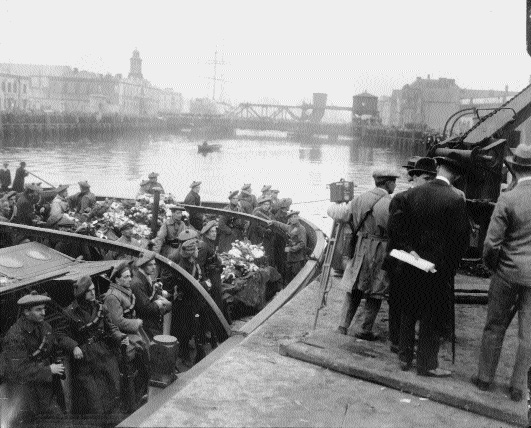
Auxiliaries guard the body of Terence MacSweeney as it is returned to Cork harbour, where he was lord mayor, following his death on the seventy-fourth day of hunger strike in Brixton prison, 25 October 1920. That information comes from the caption of an almost exactly similar photograph (taken by the same photographer?) reproduced on the bottom left corner of page 258 of Brian de Breffny (ed.), The Irish World: the history and cultural achievements of the Irish people (Thames and Hudson 1977).
Lost glass negatives of dramatic and moving pictures taken by the Manchester Guardian’s first staff photographer during the Irish Civil War have recently been discovered in Manchester. With the advent of modern digital photography, which does not require old-style developing and printing techniques, the darkroom shared by the Manchester Evening News and the Guardian was due to be closed. Current staff photographer Don McPhee was having a last nostalgic look round and found a box of glass negatives on the floor, still in their protective paper wrappping.
The pictures were taken by Walter Doughty, who joined the paper in about 1909 and retired more than forty years later. He continued to work relief shifts during the summer when he was in his eighties. According to Bob Corfield, who worked for the Manchester Evening News for fifty years:
He was a great photographer who taught me a lot. He had a knack of always being in the right place at the right time. He also photographed attempts to raise the Thetis, the submarine which was stranded on the seabed off the North Wales coast in 1939.
With the exception of the Cork picture, the selection shown here is from the outbreak of the Civil War in Dublin, June/July 1922. The soldiers in uniform are Irish National Army not British Army. Most depict fighting on Sackville Street (now O’Connell Street). Since there are no precise dates or places indicated on the glass negatives themselves the captions that follow are necessarily speculative. Readers are invited and encouraged to add any additional information or comments. Further information on the collection is available from The Guardian Picture Desk, 119 Farringdon Road, London EC1R 3ER, tel: 00 44 20 7278 2332.
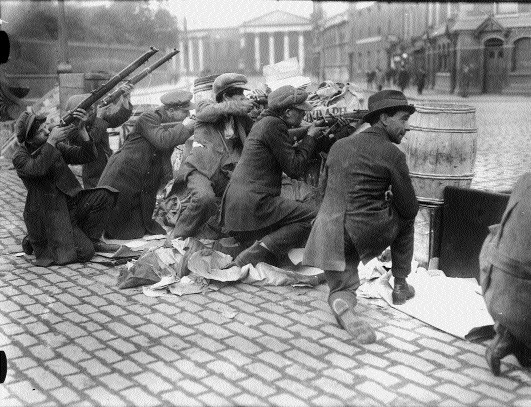
Anti-Treaty IRA men take up positions behind a barricade on College Street (Trinity College top left, Bank of Ireland, top middle).
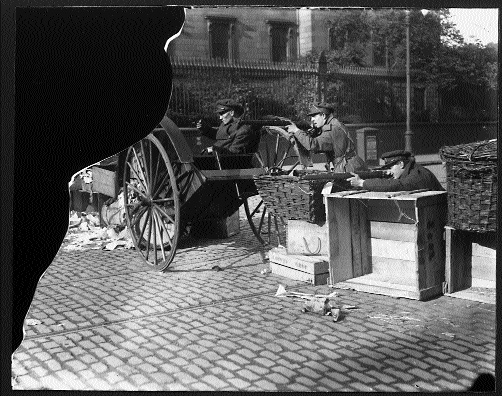
Pro-Treaty National Army troops also take up firing positions behind a barricade in College Street, but in the opposite direction (Trinity College in the background). Neither barricade looks particularly robust and both pictures look suspiciously posed; they may even have been taken in or about the same time, before hostilities commenced.
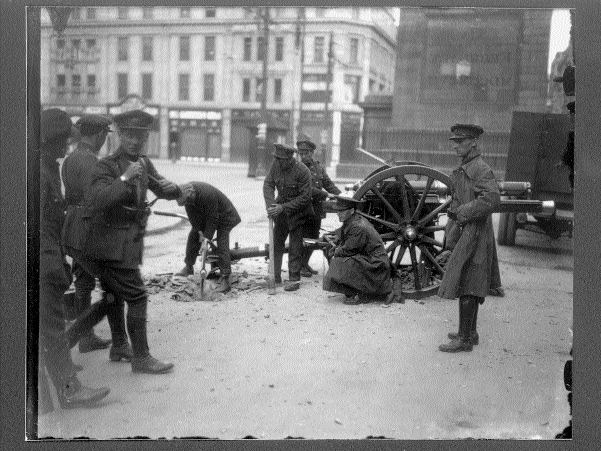
Three pictures (almost certainly taken within minutes of each other) of a National Army artillery position at the end of Henry Street (Nelson’s Pillar in the background, the boarded up GPO to the right). IRA forces under the command of Oscar Traynor had taken up positions on the far (east) side of Sackville Street at the outbreak of hostilities, June 1922.
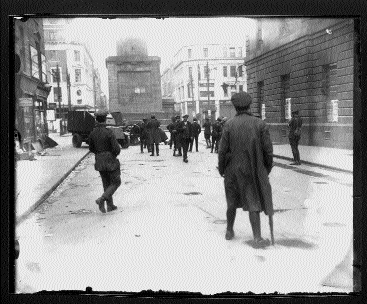
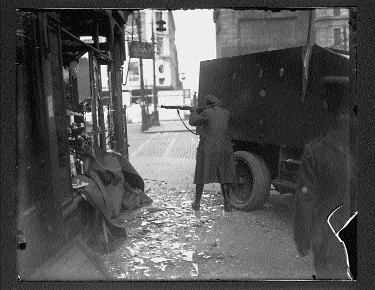
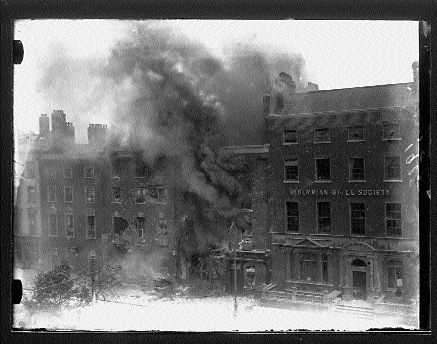
Was this the object of the artillery’s attention? The Hibernian Bible Society was at 10 Upper Sackville Street.
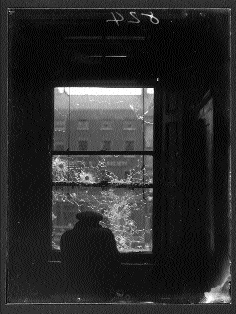
The same building through the shattered window pane of house on the far (west) side of the street.
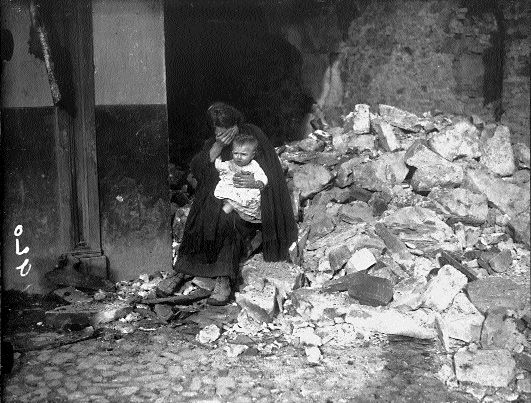
The usual casualties-a despairing mother
















